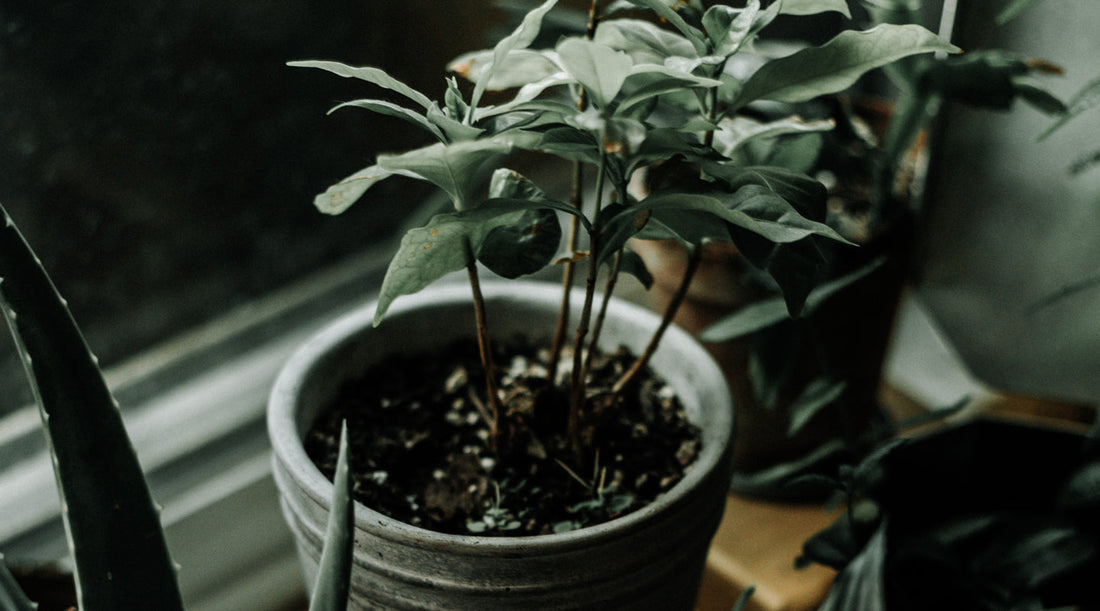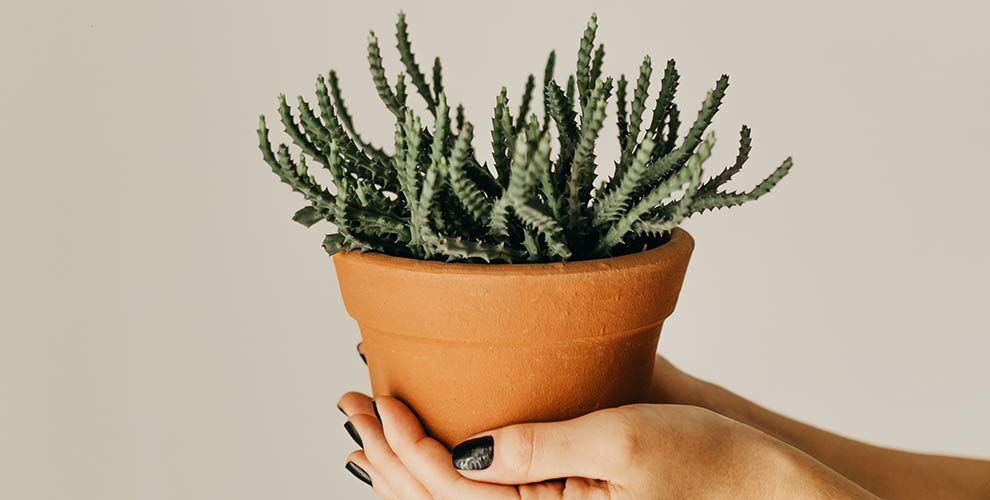
Guide to Using Coffee Grounds for Your Plants
LifestyleWhat are the Benefits of Watering Plants with Coffee?
It wakes us up in the morning. It helps us survive our afternoon haze. The hot cups of caffeinated bliss that we love so much make our daily grind bearable.
So if you’re a coffee lover, work somewhere that gulps down buckets of coffee in a day, or you are just wondering whether tossing those grounds into the trash each time is the best use for it, here’s a great way to reuse those coffee grounds: Water your plants with coffee.
 [Photo Credit: Jonathan Borba via Unsplash]
[Photo Credit: Jonathan Borba via Unsplash]
The plants in your garden and flower beds, as well as the foliage you have scattered throughout your home sweet home, actually appreciate a little jolt of caffeine—just like you do. Those same grounds that transform your productivity into levels only Captain America and Wonder Woman can achieve—can also work to “perk” up your plants.
While watering your plants does the hard work of keeping them healthy and thriving, here’s why you should water your plants with coffee too:
Benefits for Outdoor Plants
1. Coffee is a great fertilizer for plants.
Coffee contains some of the same nutrients that are good for us too, like nitrogen, potassium, calcium and magnesium. The nitrogen in coffee helps plants to produce greener, stronger and healthier stems. So reuse those grounds—not the actual cup of coffee sitting on your desk. The benefit of the grounds is that they add to the organic matter of the soil. Mixing them into your compost heap improves the way the soil drains, breathes and retains water. It’s an organic way to give those plants an important boost to keep them happy, healthy and strong enough to survive the long, cold and dark months of winter.
It's important to note that although coffee is a brown color, it’s considered a “green” compost material because it’s from the kitchen. “Greens” include coffee, eggshells and other kitchen waste products, in addition to out-of-the-kitchen materials like fresh grasses, clipped flowers or even weeds. “Brown” compost material includes carbon-rich products: leaves, wood chips, paper (and paper coffee filters). To make a healthy compost mix, you should include even amounts of greens and browns.
2. Coffee is an effective natural pesticide.
Spreading coffee grounds around the plants make a natural barrier from pests, especially slugs. The combo of caffeine and the rough, abrasive texture of the grounds create a natural turn-off for slugs. Thankfully, although the slugs are anti-coffee grounds, the same isn’t true for worms. These critters love coffee grounds and are super useful to maintaining healthy soil. Talk about going down a coffee wormhole...a caffeinated worm actually does its job much faster—and they feel comfortable reproducing in the soil, too.
3. Outdoor plants love coffee grounds the most.
Plants such as blueberries, hydrangeas, hollies, azaleas, rhododendrons, begonias, roses and most trees thrive the most when adding some nutrient-rich coffee grounds to the soil. The acid in the coffee grounds encourages flowers to bloom in shades of blue instead of pink, red or white. It's not hard to see why blueberries and hydrangeas love coffee the most.
 [Photo Credit: Jonathan Kemper via Unsplash]
[Photo Credit: Jonathan Kemper via Unsplash]
Benefits for Indoor Plants
Those indoor plants that make your living space green, cozy and totally Zen, love the caffeine boost that coffee offers, too. Brewed coffee contains magnesium and potassium that give plant growth its foundation, so use liquid coffee—not coffee grounds—for indoor plants. You don’t want to use the cup sitting in front of you, especially if you like to add some creamer, flavoring or sugar (or sugar substitute) to that java juice. Real sugar won’t hurt the plants, but the rest of the stuff will. Diluted coffee is an effective—and organic—fertilizer for healthier-looking houseplants.
African violets, azaleas, amaryllis, aloe and ferns, to name a few, are all indoor plants that love coffee.
Here’s How to Use Coffee Grounds for Plants:
Outdoor Plants
- Sprinkle leftover coffee grounds directly into your plant’s soil (or as part of a compost pile).
- Use a utensil like a fork to lightly mix the grounds into the top layer of the soil (a couple of inches) around the plant.
- You can also just sprinkle the grounds on top around the plant and leave it alone.
- In smaller amounts, coffee grounds will give up their nitrogen.
Indoor Plants
- Start with black coffee—no additives.
- Allow your plain brewed coffee to cool first. (Just use what’s left over in your pot.)
- Since coffee is pretty acidic, dilute it with the same amount of cool, tap water as the amount of coffee.
- Watering houseplants with coffee once a week should ensure you see the benefits.
Reaper’s Pro Tip:
- Always try a little bit of diluted coffee or coffee grounds first rather than mixing a lot right away. Gauge how the plants react to the extra nutrients and go from there.
- Overfeeding your plants with coffee or grounds—even if they look weepy—will likely cause a negative effect. If you’re overdoing it, the plants will develop yellowing leaves at the edges or begin to turn down—a sign of too much acid. You’ll want to take a coffee break (there will be more for you anyway) and repot the plant at this point, too.
Just like it’s hard to find people who don’t like coffee as the #1 pick-me-up, it’s hard to find plants that won’t benefit from drinking coffee, too. Some plants, however, should only get the coffee in moderation, while others like to gulp it down (like we do)! So for those of us who enjoy a cup or two (or three or four) every day, using your leftover coffee—and grounds—will cut back on your coffee waste and beautify those plants you love both in and out of your home!
[Featured Image Credit: Priscilla Du Preez via Unsplash]
RELATED: 5 Ways to Reuse Your Coffee Grounds
